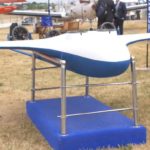Safety Line’s AirsideWatch aims to unleash powerful airport operations, safety and environmental analytics. Paris-Orly Airport is the launch customer.
Earlier this year, Air Austral implemented Safety Line’s OptiClimb solution on all aircraft in its fleet, using analytics to cut fuel usage.
Safety Line is now applying a similarly data-driven approach to making airport operations safer, more efficient and environmentally friendly, and quieter – with its AirsideWatch tool.
François Chazelle, Chief Commercial Officer, Safety Line, explained: “Ground radar data is usually used for the live optimisation of the traffic on the ground, from a safety point of view. What we do is we collect that data, break it down into searchable trajectories, and that will give you extremely valuable analytics that airports do not have access to today. This will help them improve their operations, their safety, and better measure their environmental impact as well.”
He added: “Air traffic is doubling every 15 years [but] airport size is not increasing that much.
“There’s only so much the airports can do in terms of real estate. So, airports really need to optimise their existing capacities. To do that, they need to better understand where the delays are coming from, where the aircraft are being stopped. We have, for example, the possibility to look at, in the last 500 metres leading to alignment, how many seconds did each aircraft stop during those last 500 metres, and to see the trends – whether that’s increasing or not, so they can be addressed in real time.”
Keeping the noise down
Noise emissions are clearly a big issue for airports to monitor.
Chazelle said: “You will have noise sensors on the ground, but you can only have so many. What we’re going to develop is basically virtual noise sensors, so we’ll be able to – based on trajectories – model virtual noise sensors that will tell you what noise you would be hearing at which point, based on the actual trajectories overflying that point.”
SkyBlocks
Safety Line has also launched an aviation data platform, SkyBlocks.
SkyBlocks is fed by different sources of data, including ground radar data and weather inputs from AirsideWatch; flight data and weather forecasts from OptiClimb; and data from FlightScanner, a big data safety analysis solution enabling the identification of correlations between safety incidents, such as long landings or hard landings, and the non-obvious flight parameters associated with them.
So far, SkyBlocks has accumulated radar data from 800,000 aircraft movements at four airports including Paris-Orly and Paris-Charles de Gaulle, and flight data from 600,000 flights by 1,000 aircraft.
Chazelle said: “We’ve been using a platform from the start, because when you talk about ground radar data, these are very vast amounts of data – even more than flight data. The frequency of the ground radar data is very important, so we had to have a big data platform for that purpose and we didn’t have a name until now. We’ve named it Skyblocks.
“Today, we are processing about 2,000 ground movements for the airports, and about 2,000 time schedules for the airlines, on a daily basis,” he noted.
This equates to around one transaction every two minutes.

